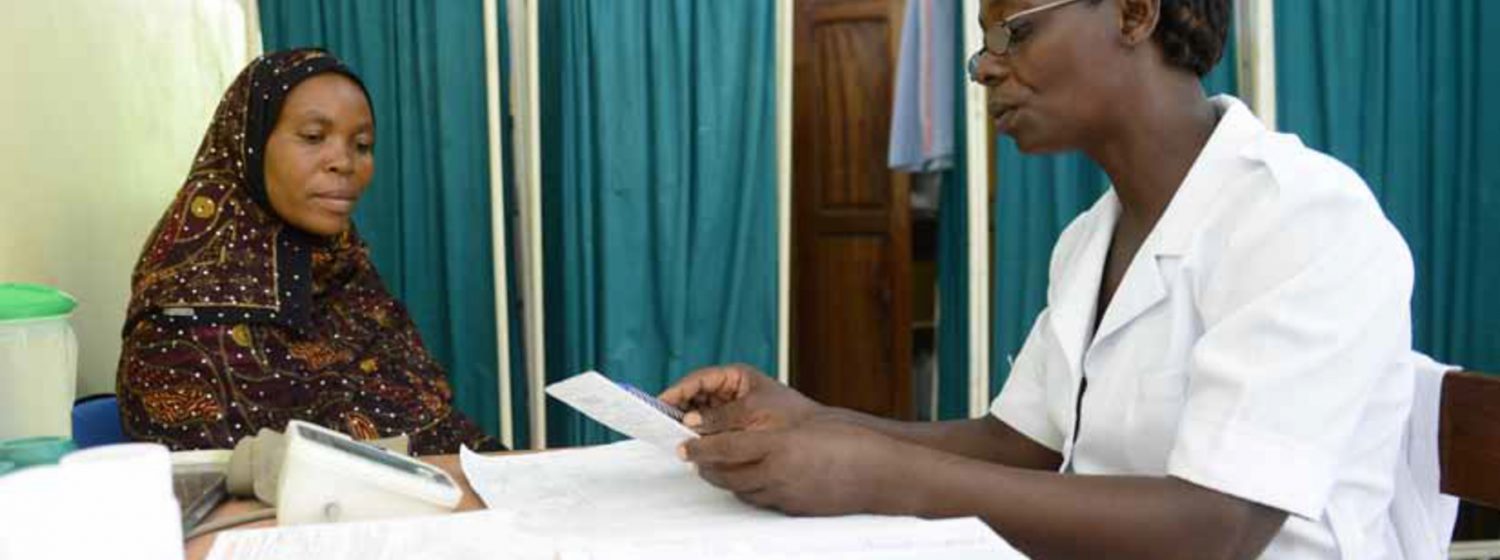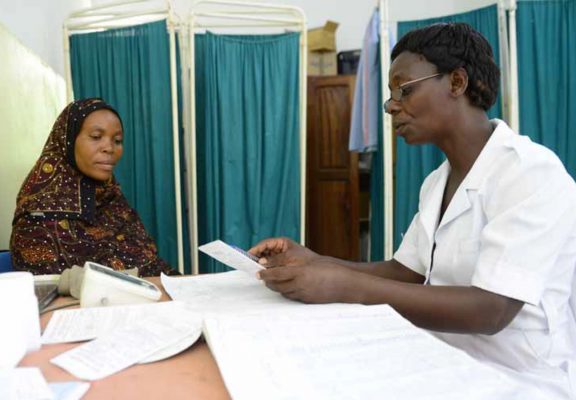


Chad
Chad is a landlocked country in northern Central Africa. It is bordered by Libya to the north, Sudan to the east, the Central African Republic to the south, Cameroon and Nigeria to the southwest and Niger to the west. It is the fifth largest country in Africa in terms of area. It has a population of 12 million people and GDP per capita of USD 1,053.
Chad is Africa’s fifth-largest nation. It is estimated that 80 percent of the population is living below the poverty line. Malaria is endemic in Chad. Children under the age of five and pregnant women are the most affected. Approximately 98 percent of the population lives in areas at risk of malaria. In 2014 a mass distribution bed net campaign supported by the Global Fund enabled the country to reach the universal coverage. The HIV epidemic is generalized, with 1 percent in the general population and 5 percent in key affected populations, including sex workers, men who have sex with men, truck drivers and people living around Lake Chad. TB incidence is 151 cases out of 100,000 inhabitants. The country is one of the 41 countries with a high TB/HIV burden (23 percent of TB patients are HIV positive). The Global fund remains a key partner and major donor in the fight against AIDS, tuberculosis and malaria.
AHO PRIORITIES FOR HEALTH DELIVERY PLAN IN CHAD
- Responsiveness of the health system and operationalization of the Health Sector Reform Program.
- The public health agenda within the Health Sector Reform Programme, with particular emphasis on public health practice, public health infrastructure, and the steering role of the organisation.
- Human resources development in technical, epidemiological, and management areas.
- Morbidity and mortality related to behavioural disorders and the adoption of healthy lifestyles.
- Demand for medical care for preventable chronic and noncommunicable diseases with special emphasis on hypertension, diabetes, and coronary heart disease, cancer, and road accidents.
- Institutional strengthening in the formulation of health promotion policies, plans, programs, and tools
- Coordination between health sector agencies and inter-sectoral partners in the assessment and control of environmental health risks.
- Demand on the public health services for medical care for preventable infections and communicable diseases, with special emphasis on HIV/AIDS, tuberculosis, food-borne illnesses, and vector-borne diseases.
PROGRAMMES & PROJECTS
1. ENVIRONMENTAL HEALTH
PURPOSE
To improve the assessment, control, and management of environmental health risks, through institutional strengthening and greater collaboration with inter-sectoral partners
EXPECTED RESULTS
- Support provided for the development of environmental health policies, including implementation strategies and plans.
- Food safety human resource capacities strengthened.
- Capacities developed and strengthened in chemistry, food and drugs, and laboratories.
- An integrated vector control management program designed.
- Strategies implemented to improve surveillance for dengue fever, malaria, and West Nile virus.
- Programs promoted to reduce the health risks of toxic chemicals.
- Support provided to environmental health management and inter-sectoral activities.
- Support provided for the implementation of water and sanitation performance appraisal and certification program.
- Solid waste assessment studies conducted.
2. HEALTH SYSTEMS AND SERVICES
PURPOSE
To improve the organization, management, and delivery of health services through the Health Sector Reform Programme.
EXPECTED RESULTS
- The capacity of the organisation to steer and regulate the health sector strengthened through training.
- The human resource management capacity of the organisation strengthened through training and technical services.
- Information systems and technology improved within the organisation.
- Health personnel prepared for continued implementation of the national quality program strategy.
- Training to improve the delivery of services and vertical health services.
- Networks established for regional collaboration and mutual support of health services development.
- Disaster preparedness plans and skills developed in the organisation with inter-sectoral partners.
- Support provided to health systems and services project development and execution.
- Technical support provided for the development of the virtual health library (VHL).
3. MANAGEMENT OF THE REPRESENTATION
PURPOSE
To strengthen the Representation’s managerial capacities with a view to improving the scope and level of the technical cooperation program and participation in interagency and inter-sectoral initiatives
EXPECTED RESULTS
- Administrative and financial procedures developed for the efficient management of the Representation and of technical cooperation.
- Staff development plan created and implemented as part of the development plan for the representation.
- Support provided for management of the Representation and for technical cooperation projects.
- Premises for the organisation made fully functional within the new administrative headquarters .
- Effective maintenance of the technological integrity of the organisation.
- Image of the organization promoted at the interagency and national levels.
- Three health projects developed in specific areas.
4. BEHAVIORAL CHANGE AND MENTAL HEALTH
PURPOSE
To strengthen health promotion programs addressing risk behaviour factors through healthy public policies and supportive environments at the national and local levels .
EXPECTED RESULTS
- Health promotion perceived and supported as an added value to the provision of health care services by all stakeholders.
- Human resources at the primary care level with the appropriate skills to support the development of HP strategies.
- Healthy policies outlined at the national level and discussed at regional levels.
- Institutional national health promotion bodies strengthened and working with RHAs.
- Support provided to HP interventions addressing healthy lifestyle practices and to selected target groups at all levels.
- Support provided by advocacy and social communication campaigns to HP interventions nationwide.
- National Mental Health Programme strengthened and Mental Health Programme in place at regional levels.
- Objectives of technical collaboration project achieved.
5. COMMUNICABLE AND NONCOMMUNICABLE DISEASE (NCD) PREVENTION AND CONTROL
PURPOSE
To strengthen and implement structured programs to prevent and control selected noncommunicable and communicable diseases at the national and regional levels, including proper evaluation and monitoring systems .
EXPECTED RESULTS
- Relevant health policies addressing selected NCDs and communicable diseases in place at all levels.
- Aptitudes of staff and community members improved regarding NCDs.
- DOTS programs implemented in regions with major PTB caseloads.
- Quality management and care provided at the local level through the program on STIs, including HIV/AIDS.
- Management of communicable and chronic NCDs improved through integrated management, advocacy, and educational campaigns.
- Communicable disease surveillance system decentralized and functional at the RHA level.
- Objectives of the technical collaboration project achieved.
RESOURCES (USD)
AHO CHAD BUDGET 2020 (USD million)* based 0n 2017 pop 14.9 million World Bank
| SO | BUDGET ITEM | AMOUNT* |
| 1 | Combating communicable diseases | 248 |
| 2 | Tackling non communicable diseases | 254 |
| 3 | Addressing determinants of health & risk factors | 247 |
| 4 | Modernising health system and health service | 245 |
| 5 | Improving preparedness, surveillance and response | 246 |
| 6 | Developing good governance & corporate services | 250 |
| Total | 1,490 |
AHO estimates that it needs to spend at least USD100 per capita on health to meet the basic health needs of the people in Africa. This is too far below developed countries e.g. in England it is US$1,300 per capita (2017)

